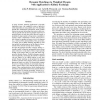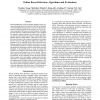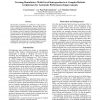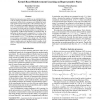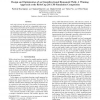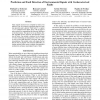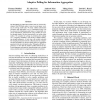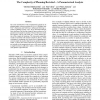103
Voted
AAAI
2012
13 years 3 months ago
2012
This paper is devoted to sequential decision making with Rank Dependent expected Utility (RDU). This decision criterion generalizes Expected Utility and enables to model a wider r...
117
click to vote
AAAI
2012
13 years 3 months ago
2012
For interaction with its environment, a robot is required to learn models of objects and to perceive these models in the livestreams from its sensors. In this paper, we propose a ...
111
Voted
AAAI
2012
13 years 3 months ago
2012
In many dynamic matching applications—especially high-stakes ones—the competitive ratios of prior-free online algorithms are unacceptably poor. The algorithm should take distr...
119
Voted
AAAI
2012
13 years 3 months ago
2012
Kernel methods have been successfully applied to many machine learning problems. Nevertheless, since the performance of kernel methods depends heavily on the type of kernels being...
114
Voted
AAAI
2012
13 years 3 months ago
2012
Introspection mechanisms are employed in agent architectures to improve agent performance. However, there is currently no approach to introspection that makes automatic adjustment...
127
click to vote
AAAI
2012
13 years 3 months ago
2012
Markov decision processes (MDPs) are an established framework for solving sequential decision-making problems under uncertainty. In this work, we propose a new method for batchmod...
123
Voted
AAAI
2012
13 years 3 months ago
2012
This paper presents the design and learning architecture for an omnidirectional walk used by a humanoid robot soccer agent acting in the RoboCup 3D simulation environment. The wal...
116
click to vote
AAAI
2012
13 years 3 months ago
2012
Many signals of interest are corrupted by faults of an unknown type. We propose an approach that uses Gaussian processes and a general “fault bucket” to capture a priori uncha...
AAAI
2012
13 years 3 months ago
2012
The flourishing of online labor markets such as Amazon Mechanical Turk (MTurk) makes it easy to recruit many workers for solving small tasks. We study whether information elicita...
142
Voted
AAAI
2012
13 years 3 months ago
2012
The early classifications of the computational complexity of planning under various restrictions in STRIPS (Bylander) and SAS+ (B¨ackstr¨om and Nebel) have influenced followin...

